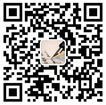护理硕士论文:中青年卒中后疲劳患者自我管理方案的干预效果研究
摘要
目的
构建中青年卒中后疲劳患者自我管理干预方案,并探讨该方案对中青年脑卒中后卒中后疲劳、自我效能及日常生活活动能力的影响。
方法
1. 干预方案构建阶段:查阅国内外相关文献,基于班杜拉社会学习理论,根据卒中后疲劳可干预影响因素,初步构建中青年卒中后疲劳患者自我管理方案,通过专家咨询,结合预试验,对干预方案进行修改、完善,最终形成一套简单、易行的中青年卒中后疲劳自我管理方案。
2. 干预方案实施阶段:选取河南省某三级甲等医院符合纳入排除标准的中青年卒中后疲劳患者 94 例,采用抛硬币法将其分为干预组和对照组,各 47 例。
对照组给予常规治疗及护理,出院后 2 次电话随访,干预组在此基础上实施基于班杜拉社会学习理论的自我管理方案,包括住院期间 4 次不同主题的团体活动和出院后 2 次电话随访。采用疲劳严重度量表(Fatigue Severity Scale,FSS)、慢性病自我效能量表(Self-efficacy for managing Chronic Disease, SECD6)及改良版 barthel 指数 (Modified Barthel Index,MBI)评价自我管理方案对中青年卒中后疲劳患者疲劳、自我效能及日常生活活动能力的影响,分别在干预前和干预后即刻进行资料收集。采用 SPSS17.0 对数据进行统计分析,方法有描述性统计分析、两独立样本 t 检验、配对 t 检验、卡方检验、Fisher 确切概率法、Wilcoxon秩和检验。
结果
干预过程中共失访 4 例,失访率 4.3%,最终共完成 90 例,干预组 44 例,对照组 46 例。
1. 干预后,干预组患者 FSS 得分由(45.68±6.30)分减少到(40.05±6.78)分;SECD6 得分由(38.75±7.80)分增加到(50.93±4.72)分,MBI 得分由(56.00±6.37)分增加到(78.34±6.11)分。
2. 两组患者干预后测量指标比较:经两独立样本 t 检验分析显示,干预后干预组患者 FSS 得分低于对照组,SECD6 和 MBI 得分高于对照组,差异均有统计学意义(P<0.001)。
3. 干预组干预前后测量指标比较:经配对 t 检验分析显示,干预组患者干预后 FSS 得分低于干预前,SECD6 和 MBI 得分高于干预前,差异均有统计学意义(P<0.001)。
结论
基于班杜拉社会学习理论和借鉴国内外相关研究构建的自我管理干预方案简单、易行,易于被患者接受,可有效降低中青年卒中后疲劳患者疲劳水平,提高其自我效能及日常生活活动能力。
关键词:中青年,自我管理方案,班杜拉社会学习理论,卒中后疲劳,自我效能,日常生活活动能力,干预.
Abstract
Objectives
To construct a post stroke fatigue self-management intervention scheme forstroke patients and to explore its influence on post-stroke fatigue, self-efficacy andactivities of daily living.
Methods
1.Construction of the intervention plan: Based on the analysis of the relatedliterature at home and abroad, Social Learning Theory established byAlbert Bandura,and influence factors of post-stroke fatigue, the post-stroke fatigue self-managementintervention scheme was initially constructed. Through the expert consultation andcombined with the preliminary test, the intervention plan was modified and improved,Finally a simple and easy post-stroke fatigue self-management scheme was formed.
2. Implementation of the intervention plan:94 stroke patients admitted tosomeone 3Ahospital in Henan Province were randomly divided into control group(47 cases) and study group (47 cases). In addition to routine treatment and nursingcare, the control group received two telephone follow-up visits after discharge . Onthis basis, the intervention group was given a self-management program based onSocial Learning Theory established byAlbert Bandura, including four differentsubjects group activities during the hospitalization and two telephone follow-up visits after discharge. To evaluate the efficacy of self-management scheme on post-strokefatigue, self-efficacy and activities of daily living, the scale of FSS, SECD6 and MBIwere filled both before and after the intervention. The statistical methods includeddescriptive statistical analysis, two independent samples t test, pair t test, chi-squaretest, Fisher's exact probability method and Wilcoxon rank sum test.
Results
During the intervention, 4 cases were missed, the rate of missing was 4.3 %, 90cases were completed, 44 cases were in intervention group and 46 cases in controlgroup.
1.After intervention, the score of FSS in intervention group was reduced from(45.68±6.30) to (40.05±6.78), the score of SECD6 increased from (38.75±7.80) to(50.93±4.72) and that of MBI from (56.00±6.37) to (78.34±6.11).
2. Comparison of the outcomes in two groups after intervention: the twoindependent samples t test showed that the scores of FSS in intervention group wassignificantly lower than that in control group, the scores of SECD6 and MBI wassignificantly higher than those in control group. The differences were all statisticallysignificant(P≤0.001).
3. Comparison of the outcomes in intervention groups before and afterintervention: the paired t test showed that the scores of FSS after intervention wassignificantly lower than that before intervention, the scores of SECD6 and MBI wassignificantly higher than those before intervention. The differences were allstatistically significant(P≤0.001).
Conclusion
The self-management scheme based on the Social Learning Theory and relatedresearch at home and abroad is simple and easy, and can be easily accepted by thestroke, It can effectively reduce the patient's fatigue after stroke, enhance their self-efficacy and activities of daily living.
Key Words:Stroke Self-management,scheme Post-stroke,Fatigue,Social Learning Theory,Self-efficacy,Activities of daily,living Intervention.
目录
一、中青年卒中后疲劳患者自我管理方案的构建
1 基于班杜拉社会学习理论干预框架
根据临床中发现康复锻炼的患者普遍存在因主观上感觉疲劳而抗拒康复锻炼的患者,且他们大多数不能正确认识自己的疲劳情况,基于班杜拉社会学习理论中自我效能提高和行为改变策略,依据文献回顾发现中青年卒中后疲劳患者存在自我管理技能不足、负性情绪大且康复积极性不高,有研究显示导致疲劳产生的四大诱因分别为:生理疲劳、心理疲劳、不健康生活方式和个性因素(如优柔寡断、多愁善感等)。影响卒中后疲劳的因素有:心理社会因素、运动减少等。
根据以上策略和影响因素构建本研究的干预框架。
2 初步构建干预方案
广泛地阅读及参考国内外文献,并结合国内外卒中后疲劳中所采用的干预方案,考虑到中青年康复患者的实际情况,初步构建中青年卒中后疲劳患者自我管理干预方案初稿,包括每次干预主题,时间,人员,形式,目标等。
中青年卒中后疲劳患者自我管理方案初稿内容如下:
(1)干预时间:共 4 周,每周一次,每次 30min~45min。
(2)干预人员:研究者本人为主,主要负责实施并调整干预方案,康复治疗师和康复科护士协助研究者本人组织团体活动。
(3)干预地点:康复治疗大厅示教室(4)干预形式:团体干预(5)干预目标:提高患者对卒中后疲劳的关注,正确认识疲劳状况,学会疲劳管理技能,协助患者制定切实可行的康复锻炼目标,提高患者康复自信心,学会正确处理不良情绪,减少患者不良情绪的发生。
对照组实施神经康复科常规治疗、护理和教育,主要包括:①基础护理,进行床单元整理、口腔护理等晨晚间护理;②康复护理,评估患者肢体活动度和残疾状态,良肢位摆放,日常生活技能护理;③心理护理:评估患者心理状态,对于有问题的患者及时进行心理疏导,给予心理支持,预防心理疾病的发生;④健康宣教:入院健康宣教,脑卒中相关知识宣教、用药、饮食常规健康教育,辅助器械使用,出院健康教育等。


 专科论文咨询
专科论文咨询
